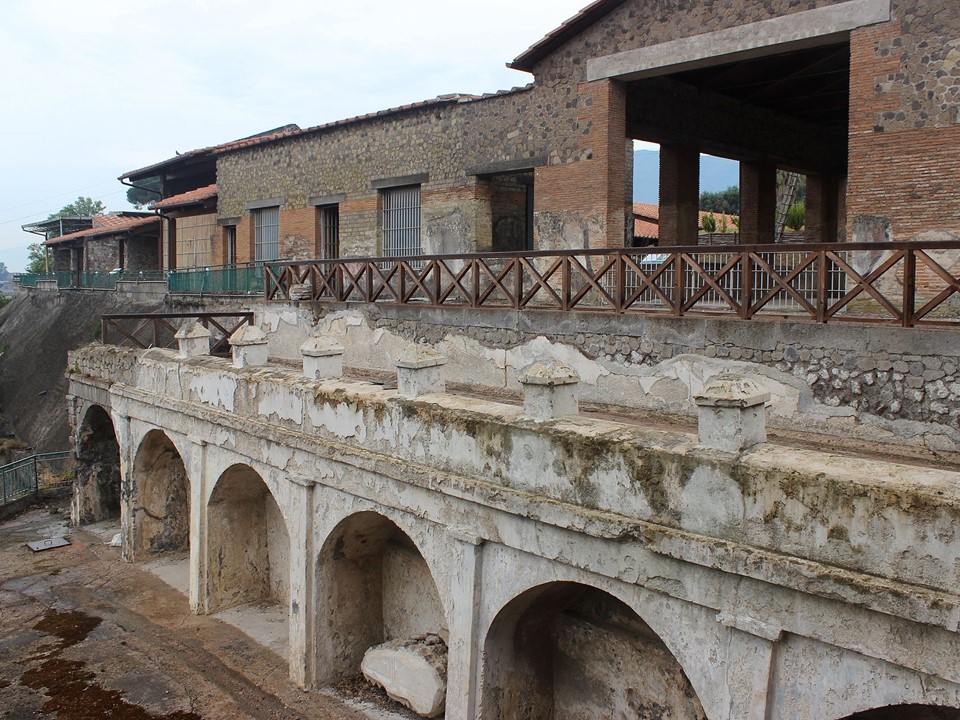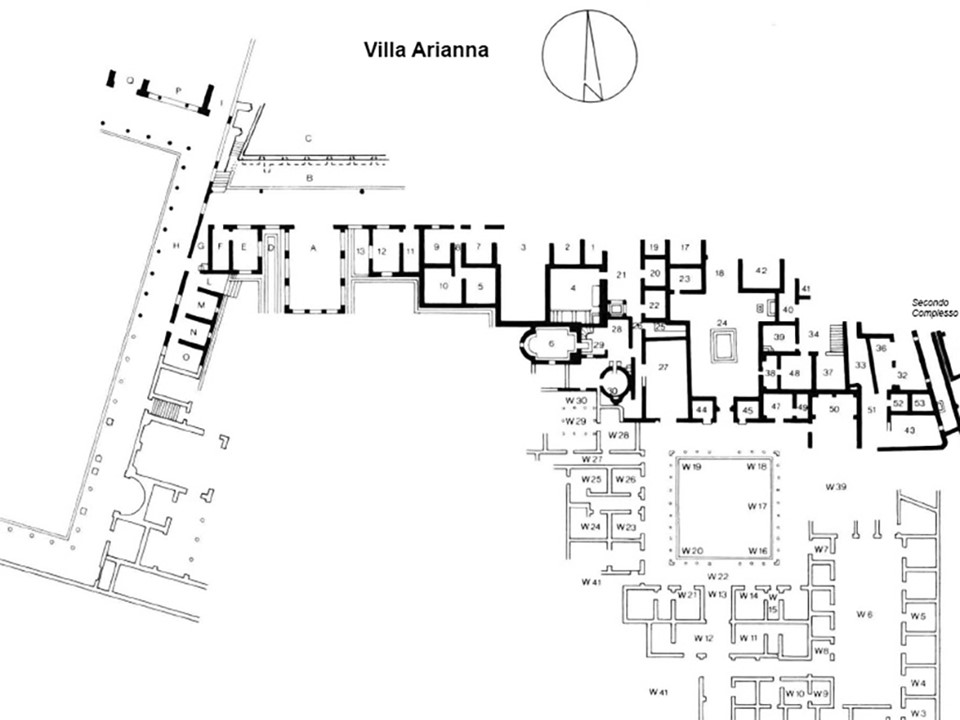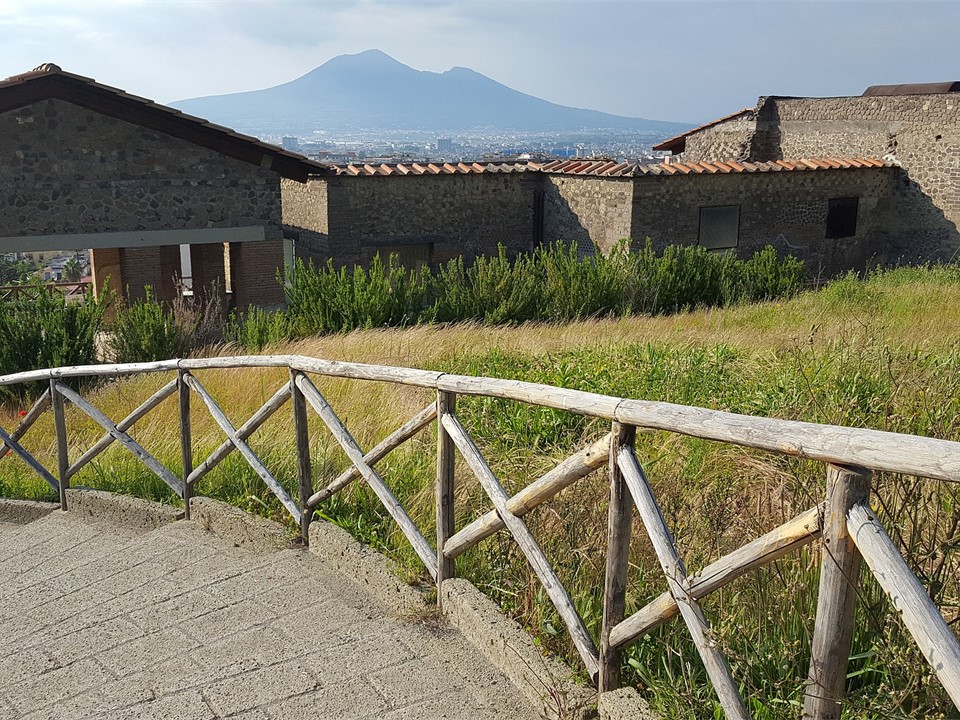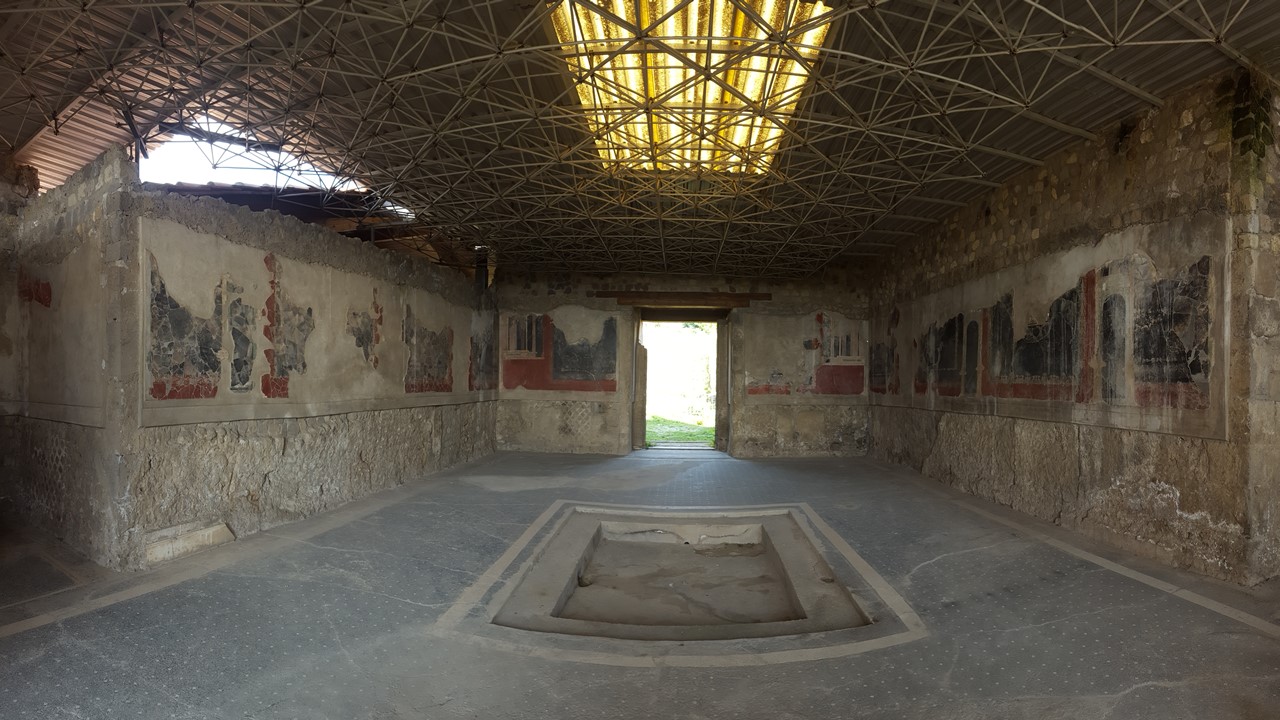
https://commons.wikimedia.org/wiki/Category:Terrazza_B_di_Villa_Arianna#/media/File:Arianna_terrazza_B.JPG
During the Archaic period (8th century BC) Stabiae already played an important strategic and commercial role. The city reached its highest population density between its destruction by Sulla (89 B.C.) and the eruption of Mount Vesuvius (79 A.D.). During this period, on the northernmost edge of the Varano hill, many villae were built taking advantage of the panoramic views. They were mainly residential villas, with beautifully decorated large apartments, thermal baths, porticoes and nymphaea. At present, only some of these villas, not entirely excavated yet, can be visited: …Villa Arianna at Stabiae, the most ancient, named after a large mythological fresco on the far wall of the triclinium is one of them… writes Archaeologist Silvia Martina Bertesago. All I can say is… let’s explore it! http://pompeiisites.org/en/stabiae/
Excavations in Villa Arianna started in 1757 and were conducted by the Swiss engineer Karl Weber, until 1762. At the time, the archaeological site of the Villa was seen more like a treasure hunt exploration site. The Weber team dug underground tunnels, explored the excavated areas, and whatever was discovered and considered of value, like furnishings and frescoes, were detached and taken to the Bourbon Museum at the Royal Palace of Portici. A lot, deemed unworthy or ruined, were left behind and much was ruined by the methods employed by the “archaeologists” of the time. Today, parts of the Villa nearest the sea have collapsed down the cliff and perished forever, extended areas of the site are still buried awaiting excavations, but thanks to a Bourbon-period map showing where tunnels dug and thereafter re-buried, archaeologists resumed excavations in 1950, and proceed with proper scientific research.

On the western hills of Varano, and overlooking the Bay of Naples, Villa Arianna, is impressive, to say the least. It is estimated that it covered an area of over 11,000 sq.m., whereas its excavated parts cover only 2,500 sq.m. The villa has an unconventional layout, due in part to its continuous development but also to the sloping nature of the site. As much of the building is still buried, the original floor-plan is quite difficult to interpret. Certainly, the main range of rooms was at the front of the highest of a series of terraces; some of these rooms featured views both of the sea on one side and of the mountains on the other. There was also a long tunnel (B) leading from the stables and farm court under the residential quarters to the shore. https://sites.google.com/site/ad79eruption/stabiae/villa-arianna

The oldest section of the Villa dates back to the late Republican period (2nd century BC), and develops around its Atrium (24) and the surrounding rooms. The Thermal Baths (6), the grand Triclinium (3), the summer Triclinium (A), and the surrounding rooms date from the middle of the 1st century AD. The large Palestra, located at the west end of the Villa was added to the complex shortly before the eruption, probably between 60 and 70 AD.

https://commons.wikimedia.org/wiki/Category:Atrio_24_di_Villa_Arianna#/media/File:Impluvium.jpg
Villa Arianna was lavishly decorated with frescoes and portable furnishings, an undisputed testimony of the expensive lifestyle the owners enjoyed, and evidence of their refined taste and style. One such high-quality fresco, drawing inspiration from the myth of Dionysus and Ariadne, gave the Villa its modern name.
A presentation of the amazing Frescoes discovered in Villa Arianna will be part of another BLOG POST… Villa Arianna, Part 2
For a Student Activity on Villa Arianna at Stabiae, please… Check HERE!